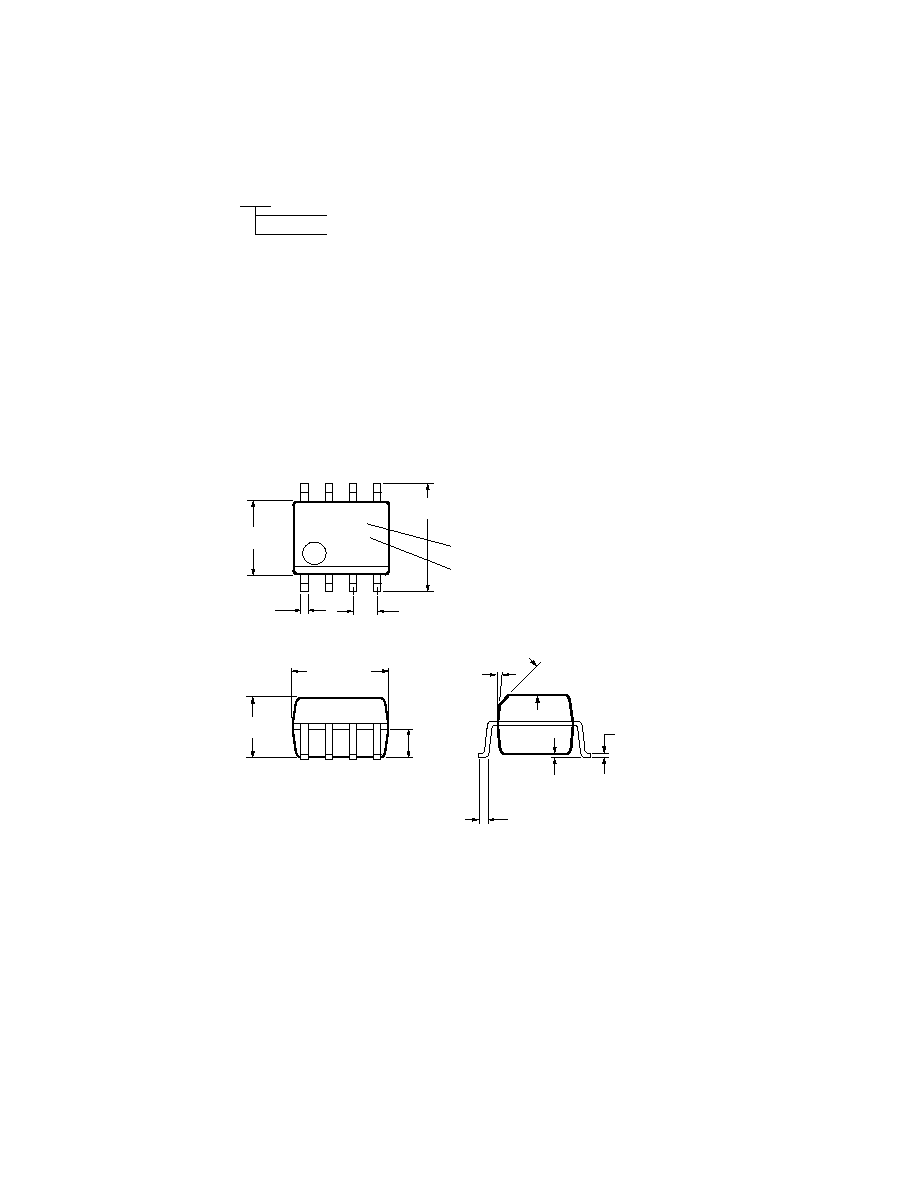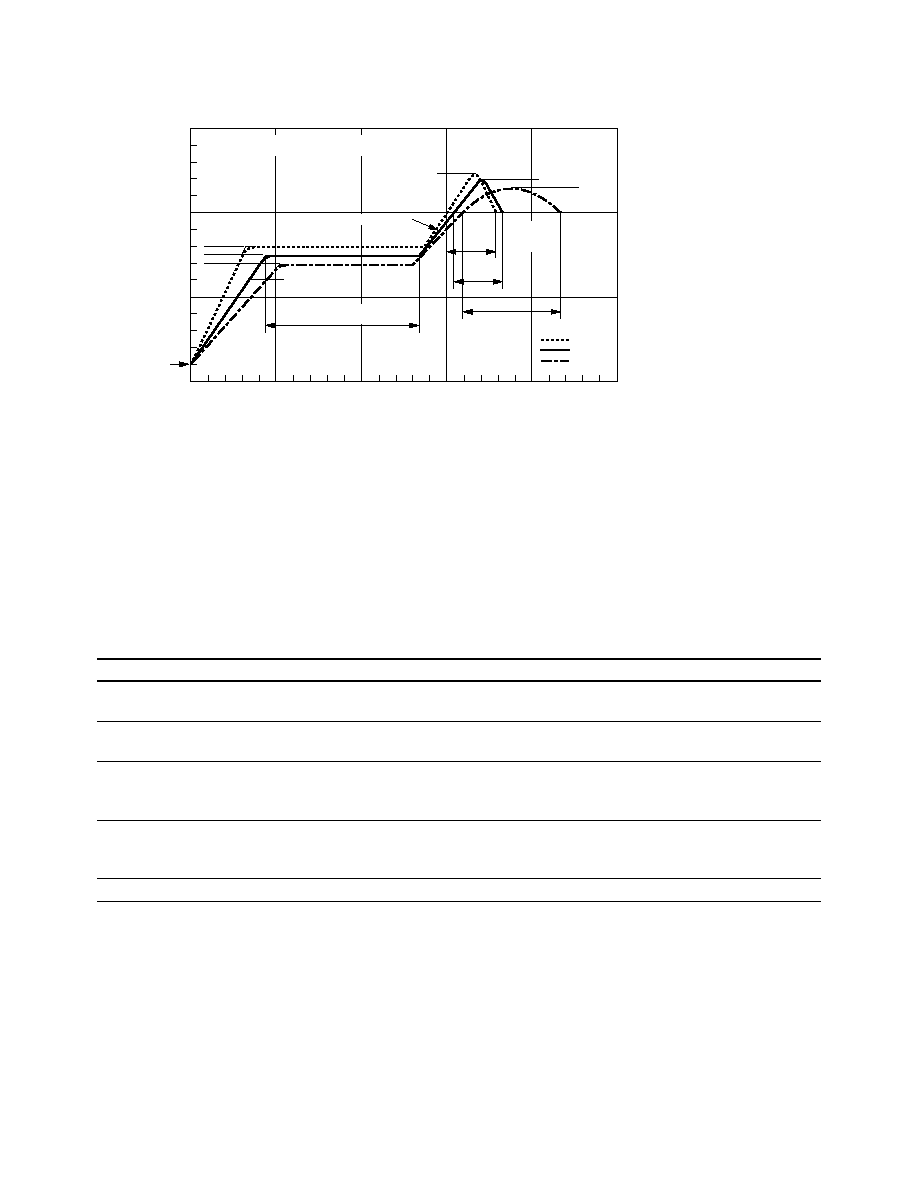 | –≠–ª–µ–∫—Ç—Ä–æ–Ω–Ω—ã–π –∫–æ–º–ø–æ–Ω–µ–Ω—Ç: HCPL-0708 | –°–∫–∞—á–∞—Ç—å:  PDF PDF  ZIP ZIP |

Description
Available in SO-8 package, the
HCPL-0708 optocoupler utilizes the
latest CMOS IC technology to
achieve outstanding performance
with very low power consumption.
Basic building blocks of the HCPL-
Agilent HCPL-0708
High Speed
CMOS Optocoupler
Data Sheet
Features
∑ +5 V CMOS compatibility
∑ 15 ns typical pulse width distortion
∑ 30 ns max. pulse width distortion
∑ 40 ns max. propagation delay
skew
∑ High speed: 15 MBd
∑ 60 ns max. propagation delay
∑ 10 kV/
µ
s minimum common mode
rejection
∑ ≠40 to 100
∞
C temperature range
∑ Safety and regulatory approvals
pending
≠ UL recognized
2500 V rms for 1 min. per
UL 1577 for HCPL-0708
≠ CSA component acceptance
Notice #5
≠ VDE 0884 (TUV) approved for
HCPL-0708 Option 060
Applications
∑ Scan drive in PDP
∑ Digital field bus isolation:
DeviceNet, SDS, Profibus
∑ Multiplexed data transmission
∑ Computer peripheral interface
∑ Microprocessor system interface
∑ DC/DC converter
Functional Diagram
0708 are a high speed LED and a
CMOS detector IC. The detector
incorporates an integrated
photodiode, a high-speed trans-
impedance amplifier, and a voltage
comparator with an output driver.
*A 0.1
µ
F bypass capacitor
must be connected between
pins 5 and 8.
CAUTION: It is advised that normal static precautions be taken in handling and assembly of this
component to prevent damage and/or degradation which may be induced by ESD.
8
7
6
1
3
5
2
4
NC
ANODE
CATHODE
NC
VDD
VO
GND
LED
OFF
ON
TRUTH TABLE
NC
VO, OUTPUT
H
L

2
Ordering Information
Package Outline Drawing
HCPL-0708 (Small Outline SO-8 Package)
Specify Part Number followed by Option Number (if desired)
Example
HCPL-0708#XXX
060 = VDE0884 Option.
500 = Tape and Reel Packaging Option.
XXX
YWW
8
7
6
5
4
3
2
1
PIN
ONE
7∞
5.842 ± 0.203
(0.236 ± 0.008)
3.937 ± 0.127
(0.155 ± 0.005)
0.381 ± 0.076
(0.016 ± 0.003)
1.270
(0.050)
BSG
5.080 ± 0.005
(0.200 ± 0.005)
3.175 ± 0.127
(0.125 ± 0.005)
1.524
(0.060)
45∞ X 0.432
(0.017)
0.228 ± 0.025
(0.009 ± 0.001)
0.152 ± 0.051
(0.006 ± 0.002)
TYPE NUMBER (LAST 3 DIGITS)
DATE CODE
DIMENSIONS IN MILLIMETERS AND (INCHES).
LEAD COPLANARITY = 0.10 mm (0.004 INCHES).
*OPTION 500 NOT MARKED.
0.305
(0.012)
MIN.

3
Insulation and Safety Related Specifications
Parameter
Symbol
Value
Units
Conditions
Minimum External Air
L(I01)
4.9
mm
Measured from input terminals to output
Gap (Clearance)
terminals, shortest distance through air.
Minimum External
L(I02)
4.8
mm
Measured from input terminals to output
Tracking (Creepage)
terminals, shortest distance path along body.
Minimum Internal Plastic
0.08
mm
Insulation thickness between emitter and
Gap (Internal Clearance)
detector; also known as distance through
insulation.
Tracking Resistance
CTI
175
Volts
DIN IEC 112/VDE 0303 Part 1
(Comparative Tracking Index)
Isolation Group
IIIa
Material Group (DIN VDE 0110, 1/89, Table 1)
Solder Reflow Thermal Profile
All Agilent data sheets report the
creepage and clearance inherent
to the optocoupler component
itself. These dimensions are
needed as a starting point for the
equipment designer when
determining the circuit insulation
requirements. However, once
mounted on a printed circuit
board, minimum creepage and
clearance requirements must be
met as specified for individual
equipment standards. For
creepage, the shortest distance
path along the surface of a
printed circuit board between the
solder fillets of the input and
output leads must be considered.
There are recommended
techniques such as grooves and
ribs which may be used on a
printed circuit board to achieve
desired creepage and clearances.
Creepage and clearance distances
will also change depending on
factors such as pollution degree
and insulation level.
Regulatory Information
The HCPL-0708 has been
approved by the following
organizations:
UL
Recognized under UL 1577,
component recognition program,
File E55361.
CSA
Approved under CSA Component
Acceptance Notice #5, File
CA88324.
VDE
Approved according to
VDE 0884/06.92,
File 6591-23-4880-1005.
TUV
Approved according to
VDE 0884/06.92, Certificate
R9650938.
0
TIME (SECONDS)
TEMPERATURE (∞C)
200
100
50
150
100
200
250
300
0
30
SEC.
50 SEC.
30
SEC.
160∞C
140∞C
150∞C
PEAK
TEMP.
245∞C
PEAK
TEMP.
240∞C
PEAK
TEMP.
230∞C
SOLDERING
TIME
200∞C
PREHEATING TIME
150∞C, 90 + 30 SEC.
2.5∞C ± 0.5∞C/SEC.
3∞C + 1∞C/≠0.5∞C
TIGHT
TYPICAL
LOOSE
ROOM
TEMPERATURE
PREHEATING RATE 3∞C + 1∞C/≠0.5∞C/SEC.
REFLOW HEATING RATE 2.5∞C ± 0.5∞C/SEC.

4
VDE 0884 Insulation Related Characteristics (Option 060)
Description
Symbol
HCPL-0708 Option 060
Units
Installation classification per DIN VDE 0110/1.89, Table 1
for rated mains voltage
150 V rms
I-IV
for rated mains voltage
300 V rms
I-III
for rated mains voltage
450 V rms
Climatic Classification
55/85/21
Pollution Degree (DIN VDE 0110/1.89)
2
Maximum Working Insulation Voltage
V
IORM
560
V peak
Input to Output Test Voltage, Method b
V
PR
1050
V peak
V
IORM
x 1.875 = V
PR
, 100% Production
Test with t
m
= 1 sec, Partial Discharge < 5 pC
Input to Output Test Voltage, Method a
V
PR
840
V peak
V
IORM
x 1.5 = V
PR
, Type and Sample Test,
t
m
= 60 sec, Partial Discharge < 5 pC
Highest Allowable Overvoltage
V
IOTM
4000
V peak
(Transient Overvoltage, t
ini
= 10 sec)
Safety Limiting Values
(Maximum values allowed in the event of a failure,
also see Thermal Derating curve, Figure 11.)
Case Temperature
T
S
150
∞
C
Input Current
I
S,INPUT
150
mA
Output Power
P
S,OUTPUT
600
mW
Insulation Resistance at T
S
, V
10
= 500 V
R
IO
10
9
Refer to the front of the optocoupler section of the
Isolation and Control Component Designer's Catalog, under Product Safety Regulations section
(VDE 0884), for a detailed description.
Note: These optocouplers are suitable for "safe electrical isolation" only within the safety limit data. Maintenance of the safety data shall be
ensured by means of protective circuits.
Note: The surface mount classification is Class A in accordance with CECC 00802.
Recommended Operating Conditions
Parameter
Symbol
Min.
Max.
Units
Figure
Ambient Operating Temperature
T
A
≠40
+100
∞
C
Supply Voltages
V
DD
4.5
5.5
V
Input Current (ON)
I
F
10
16
mA
1, 2
Absolute Maximum Ratings
Parameter
Symbol
Min.
Max.
Units
Figure
Storage Temperature
T
S
≠55
125
∞
C
Ambient Operating Temperature
[1]
T
A
≠40
+100
∞
C
Supply Voltages
V
DD
0
6
Volts
Output Voltage
V
O
≠0.5
V
DD2
+0.5
Volts
Average Output Current
I
O
2
mA
Average Forward Input Current
I
F
20
mA
Lead Solder Temperature
260
∞
C for 10 sec., 1.6 mm below seating plane
Solder Reflow Temperature Profile
See Solder Reflow Temperature Profile Section

5
Electrical Specifications
Over recommended temperature (T
A
= ≠40
∞
C to +100
∞
C) and 4.5 V
V
DD
5.5 V.
All typical specifications are at T
A
= 25
∞
C, V
DD
= +5 V.
Parameter
Symbol
Min.
Typ.
Max.
Units
Test Conditions
Fig.
Notes
Input Forward Voltage
V
F
1.3
1.5
1.8
V
I
F
= 12 mA
1
Input Reverse
BV
R
5
V
I
R
= 10
µ
A
Breakdown Voltage
Logic High Output
V
OH
4.0
4.8
V
I
F
= 0, I
O
= ≠20
µ
A
Voltage
Logic Low Output
V
OL
0.01
0.1
V
I
F
= 12 mA, I
O
= 20
µ
A
Voltage
Input Threshold Current
I
TH
8.2
mA
I
OL
= 20
µ
A
2
Logic Low Output
I
DDL
6.0
14.0
mA
I
F
= 12 mA
4
Supply Current
Logic High Output
I
DDH
4.5
11.0
mA
I
F
= 0
3
Supply Current
Switching Specifications
Over recommended temperature (T
A
= ≠40
∞
C to +100
∞
C) and 4.5 V
V
DD
5.5 V.
All typical specifications are at T
A
= 25
∞
C, V
DD
= +5 V.
Parameter
Symbol
Min.
Typ.
Max.
Units
Test Conditions
Fig.
Notes
Propagation Delay Time
t
PHL
20
35
60
ns
I
F
= 12 mA, C
L
= 15 pF
5
1
to Logic Low Output
CMOS Signal Levels
Propagation Delay Time
t
PLH
13
21
60
ns
I
F
= 12 mA, C
L
= 15 pF
5
1
to Logic High Output
CMOS Signal Levels
Pulse Width
PW
100
ns
Pulse Width Distortion
|PWD|
0
14
30
ns
I
F
= 12 mA, C
L
= 15 pF
2
2
CMOS Signal Levels
Propagation Delay Skew
t
PSK
40
ns
I
F
= 12 mA, C
L
= 15 pF
3
3
CMOS Signal Levels
Output Rise Time
t
R
20
ns
I
F
= 12 mA, C
L
= 15 pF
(10 - 90%)
CMOS Signal Levels
Output Fall Time
t
F
25
ns
I
F
= 12 mA, C
L
= 15 pF
(90 - 10%)
CMOS Signal Levels
Common Mode
|CM
H
|
10
15
kV/
µ
s
V
CM
= 1000 V, T
A
= 25
∞
C,
4
4
Transient Immunity at
I
F
= 0 mA
Logic High Output
Common Mode
|CM
L
|
10
15
kV/
µ
s
V
CM
= 1000 V, T
A
= 25
∞
C,
5
5
Transient Immunity at
I
F
= 12 mA
Logic Low Output




